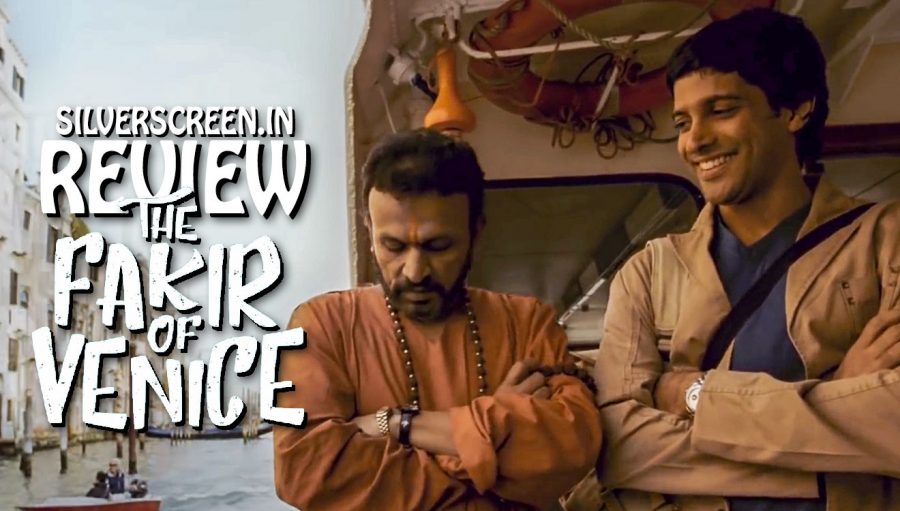Director: Anand Surapur
Cast: Farhan Akhtar, Annu Kapoor, Kamal Sidhu, Valentina Carnelutti
Composer: A R Rahman, Sagar Desai
Cinematographer: Preethi Jayaraman, Deepti Gupta
A scene in Anand Surapur’s The Fakir of Venice is shot inside a UTI Bank ATM. At least according to Wikipedia, UTI Bank changed its name to Axis Bank in 2007. That’s the length of delay this film has faced in its production and release. It was supposed to release in 2009 after a premiere in Los Angeles which would have made The Fakir of Venice one of the earliest acting roles if not the earliest for Farhan Akhtar. But we’ve had Farhan Akhtar the actor, singer, producer for more than a decade now. From being one of the freshest directors at one point he is now better known as the actor/producer and that occasional singer who doesn’t seem to understand the true meaning of occasional. All this is to say that the film might be dated and, yes, it surely is but it is also alarmingly pointless. The film brings up subjects that it categorically refuses to engage with beyond the superficial and the disinterestedness, dullness is translated directly from screen to us.
A museum curator/artist wants a fakir from India for one of his art installation projects and as a production coordinator in cinema, the job to find one lands into Adi’s (Farhan Akhtar) hands. In the first scene, we see him surreptitiously taking a monkey for a shoot somewhere near the border. That portends things to come where Adi – for his own personal gains – would parade Sattar (Annu Kapoor) as the fakir or as one of the empathetic Italians put it, his performing monkey all over Venice. Apart from that one Italian character, Gia played by Valentina Carnelutti, everyone in the film (written by Rajesh Devraj and story by Homi Adajania) is unlikable to the point of inviting open derision. Adi is shown as someone who needs money to go study filmmaking in America, but he is written as a rich brat who takes everything for granted and doesn’t care for anyone apart from himself. The people he works with are quick to judge everyone around – an art studio owner’s first reaction on seeing Adi is to ask what he is doing with a woman with fake breasts. The Italian artist himself is a self-aware phony who has commodified exotic and absurdist art, the possibility of endless rationalisation absolving him of all exploitation.
Exploitation is what happens to Sattar when he is taken to Venice and he is not even a real fakir. He and his sister Hamida do it for the money, a neat trick of staying buried under the sand for three-and-a-half hours that he’s been performing since he was a kid on Juhu beach. Adi is the entitled kid who is bemused when Sattar, a Muslim from Mumbai with a likely dark past, says that he has no ID or address proof. Neither does he get their restlessness mixed aspiration when they blindly take up his offer.
Recommended
There is something The Fakir of Venice wants to say about the exoticism of the east, the commodification of art but it inexplicably ends up falling for the associated pitfalls. Even its negatives are a cliché. Akhat and Kapoor turn in dispassionate performances as if while acting, they’ve been wrestling with the logic behind signing this film in their minds. Kapoor would rather spend the full length of the film under the ground, after all it is only 98 minutes and his record is more than 200. Even after 10 years, the film has an unfinished look, sometimes dialogues and dubbing run over unrelated scenes and the camera loses focus and corrects itself in the middle of a scene. Maybe this too is self-aware art and it’ll dawn upon us ten years from now.
*****
The Fakir Of Venice review is a Silverscreen original article. It was not paid for or commissioned by anyone associated with the movie. Silverscreen.in and its writers do not have any commercial relationship with movies that are reviewed on the site.



